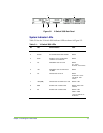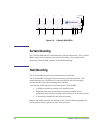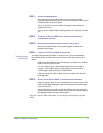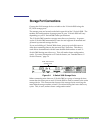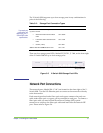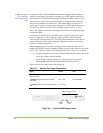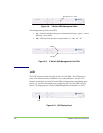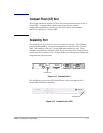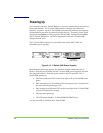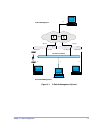
3-8 SANRAD V-Switch CLI User Manual
A copper connection
will not work if an
SFP is present in the
port.
At power up, the V-Switch 3000 automatically registers which connector,
copper or fiber optic, is active by searching for an SFP optical transceiver.
The presence of an SFP will automatically determine which mode is active.
Once the port is active in one mode, it will not change modes unless the
first, active connection is broken first. This means that once the port is
active over a copper connection, the insertion of an SFP optical transceiver
into the fiber optic connector will not change the port activity to fiber
optic. The copper connection must first be broken and then the fiber optic
connection made.
Conversely, if a port is active on a fiber optic connection and you want to
switch to copper, it is not enough to remove the fiber optic connection
from the SFP optical transceiver. The SFP optical transceiver must also be
removed from the fiber optic connector. Only then can the port activity
switch to a copper connection.
When configuring your network topology, keep in mind that the current
initiator technology does not support volume access by more than one server at
a time. There are two methods for allowing multi-server access to a volume:
Connect a single server to the V-Switch 3000 and allow other servers to
access the volume via file sharing.
Install volume-sharing software to coordinate the read/write
functionalities and data synchronization between servers.
The network ports support all of the following:
Table 3-3: Network Port Cable Connections
CABLE LENGTH SFP
1000BASE-SX SHORT-WAVE LASER FOR
MULTIMODE FIBER
F
ROM 275M TO 550M SHORT-WAVE SFP
1000BASE-LX LONG-WAVE LASER FOR SINGLE
MODE FIBER
U
P TO 10KM LONG-WAVE SFP
1000BASE-TX
(TWISTED-PAIR) OVER CATEGORY 5
UTP
U
P TO 100M __
10218
Ethernet (Network) Ports
Fiber Optic
SFP
Copper
RJ45
Figure 3-6. V-Switch 3000 Network Ports






